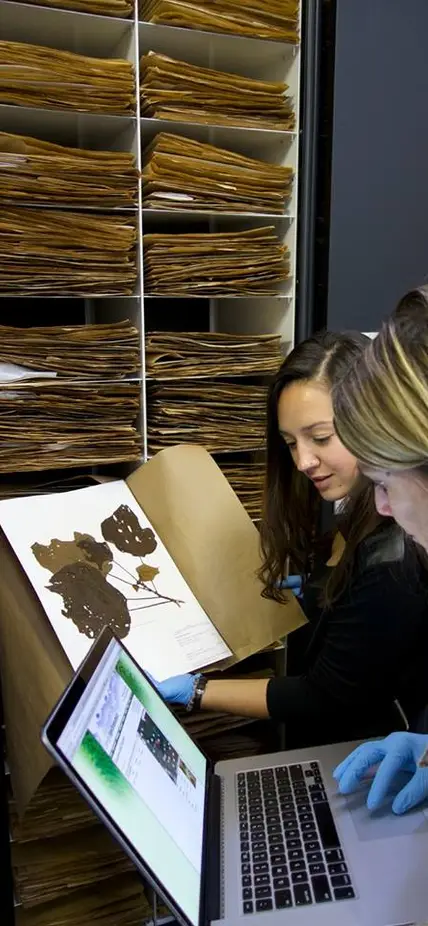Washington, DC—Last week, the Natural Sciences and Engineering Research Council of Canada announced a multimillion dollar grant to support the launch of the Canadian Airborne Biodiversity Observatory, which will specialize spectranomics research, a revolutionary technique devised in 2009 by Carnegie’s Greg Asner and Robin Martin.
This combined fieldwork-and-laboratory effort deploys a flying laboratory to determine the relationship between the function and biological diversity of forest canopy plants, which is now being applied to coral reef communities, too.
“CABO’s adoption of our approach represents a milestone for our Carnegie Airborne Observatory team’s broad impact on ecology and conservation science, which we started more than 12 years ago,” Asner said.
Since developing their technique, the CAO team’s experts and their partners have developed the world’s first Spectranomics Database, which links dried and cryogenically frozen forest canopy specimens to the chemical variation detected by the plane’s instrument suite. Through the collection of over 13,000 samples from more than 100 forest and savanna sites in 10 different countries, the team has determined that the portfolio of chemicals generated by canopy plants varies based on evolutionary history as well as surrounding environment, including elevation, hydrology, and soil content, creating a rich mosaic.
The CAO team has mapped plant diversity of the Peruvian Amazon, Borneo, California, and other forests worldwide, providing insight into where forest biodiversity well protected and where conservation efforts need to be strengthened. They were recently the recipients of several grants to further extend their spectranomics approach to coral reef science and conservation.
The CABO team will use Martin and Asner’s spectranomics approach to investigate Canada’s terrestrial biodiversity. They plan to establish a central library of spectral barcodes for important plant species; monitor the impacts of land use on forest biodiversity; test the influence of increased atmospheric nitrogen on plant communities; and map shrub cover, plant species composition, and functional trait diversity at the CABO’s Herschel Island site in the Northern Yukon.
"The Carnegie Airborne Observatory has pioneered the spectranomics approach for the remote sensing of plant functional diversity, especially in the tropical rainforest biome. We will use and further develop the spectranomics approach in a Canadian context to better understand how Canadian ecosystems are responding to major environmental changes: land-use change, invasive species, climate change, and atmospheric pollution,” said CABO principal investigator Etienne Laliberté of Université de Montréal. “As such, our project for a Canadian Airborne Biodiversity Observatory complements Carnegie's efforts and extends it to temperate and boreal biomes. In addition, we are developing hyperspectral UAV platforms to get higher spatial resolution data for ecosystems such as tundra, peatlands, and grasslands, in which small plants dominate.”
The observatory includes researchers from four Canadian universities: Université de Montréal, McGill University, University of British Columbia, and Université de Sherbrooke—as well as researchers from seven academic institutions outside of Canada.
Top Image Caption: Robin Martin and Katie Kryston search the Spectranomics Library for a species. Photo by Greg Asner.
__________________
Carnegie Spectranomics is funded by the John D. and Catherine T. MacArthur Foundation and William R. Hearst III.
The Carnegie Institution for Science (carnegiescience.edu) is a private, nonprofit organization headquartered in Washington, D.C., with six research departments throughout the U.S. Since its founding in 1902, the Carnegie Institution has been a pioneering force in basic scientific research. Carnegie scientists are leaders in plant biology, developmental biology, astronomy, materials science, global ecology, and Earth and planetary science.
